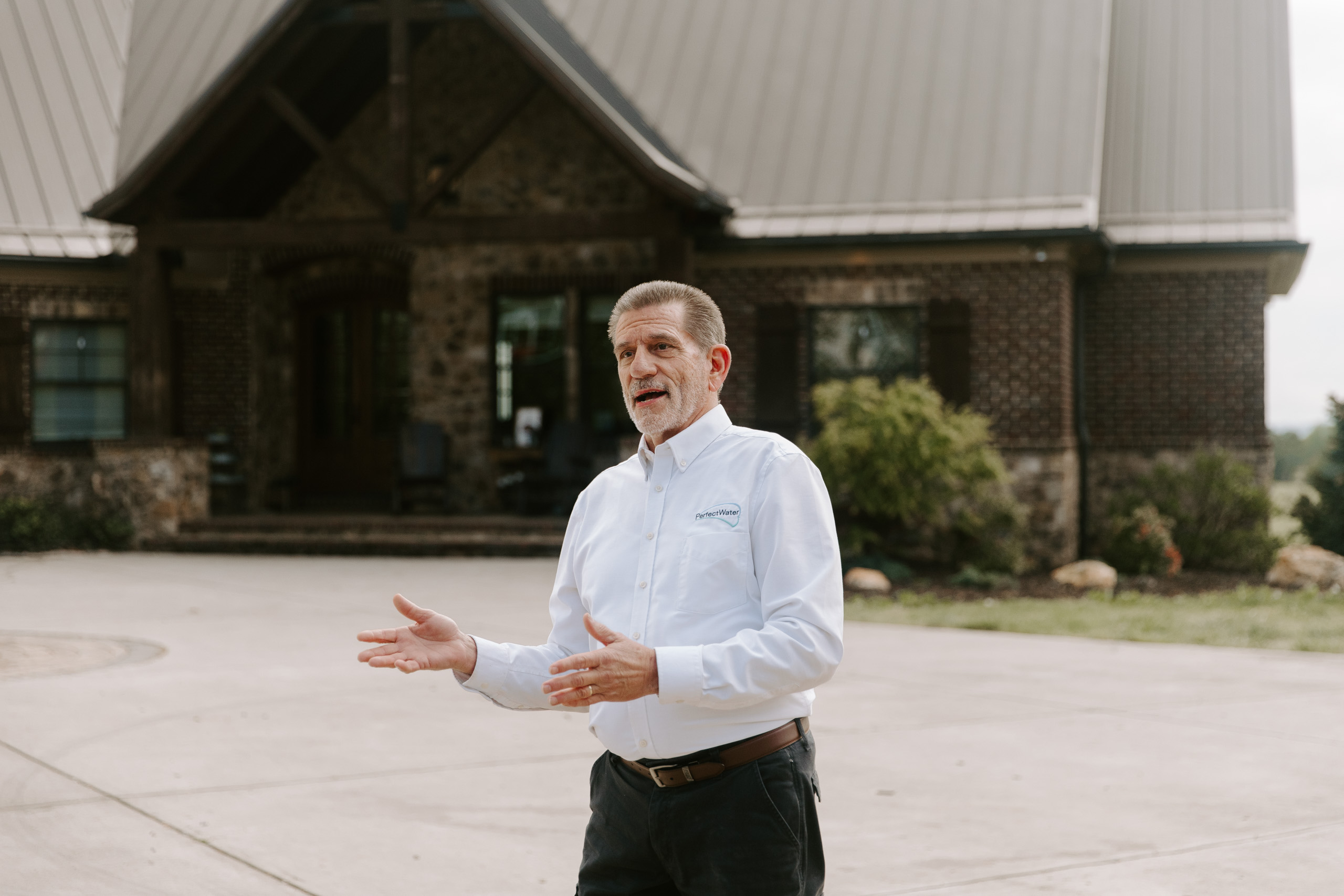Homeowner's Guide to Water Softeners (2020)
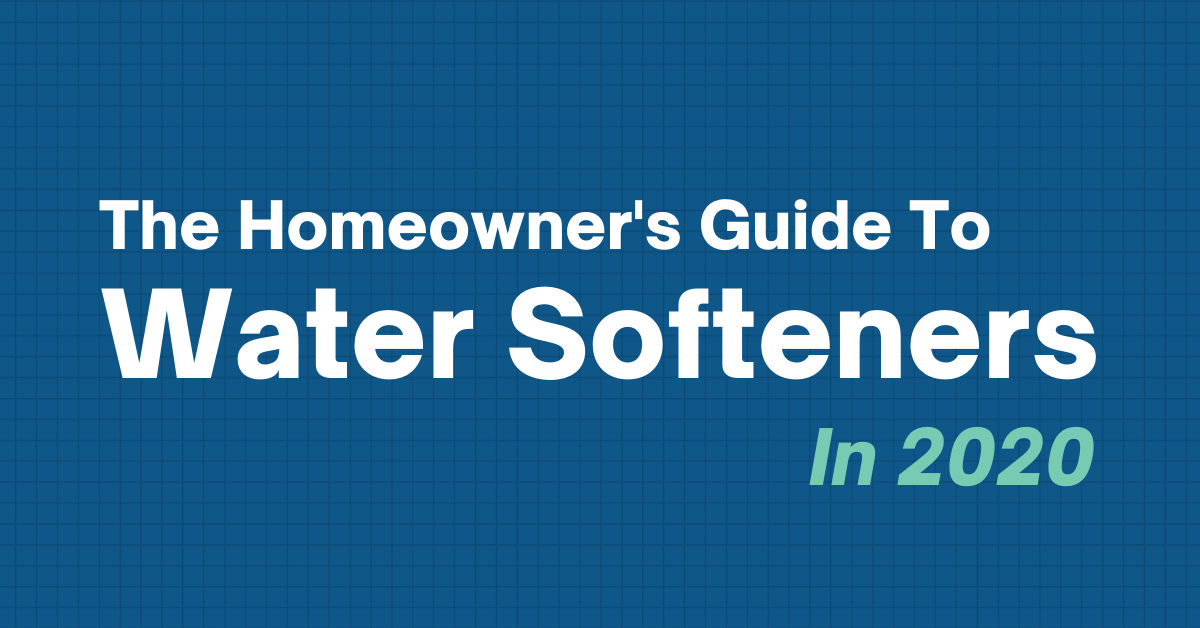
What is a Water Softener?
A water softener is a system that uses the water treatment process called ion exchange to remove hardness minerals in water – such as calcium and magnesium.
Water softeners are used in both residential and industrial applications.
What is Hard Water?
Water “hardness” is caused by the presence of calcium and magnesium molecules within the water. (hardness can sometimes also be caused by “other divalent and trivalent metallic elements“) Therefore, hard water is simply water that has calcium and/or magnesium present.
The more “hardness” in the water, the “harder” it is.
General guidelines for water hardness:
ClassificationMg/L (or ppm)Grains/Gal: Soft0 – 17.10 – 1Slightly Hard17.1 – 601 – 3.5Moderately Hard60 – 1203.5 – 7.0Hard120 – 1807.0 – 10.5Very Hard180 +10.5 +
(These standards were developed by the American Society of Agriculture Engineers (S-339) and the Water Quality Association (WQA).)
You can test the hardness of your own water with hardness test strips.
Did You Know?
A home with soft water can expect to use the same water heater for 10-20 years with minimal loss of efficiency!
What is Soft Water?
Soft water is water that has less than 1 grain of hardness per gallon.
“Soft water is defined by American National Standards NSF/ANSI 44 and NSF/ANSI 330 as water containing <1 grain of hardness per gallon (or <17.1 mg/L hardness).”
While water hardness is determined by the presence of calcium/magnesium, water softness is determined by the absence of calcium/magnesium.
Benefits of Soft Water
If you are considering a water softener, here are some benefits that you can expect.
Soft & Moisturized Skin – Positively charged hardness molecules react with the negatively charged body wash and soaps that we use which causes a curd to form and builds a layer of soapy scum covering our skin. However, with soft water, the soap works as it’s supposed to and thoroughly cleans our skin and washes off – allowing our natural skin oils to be released.
Silky & Natural Hair – Similarly as mentioned above, shampoo reacts the same way! When soft water is used, the shampoo and conditioner are able to work properly, leaving your hair healthy, naturally, and silky.
Smooth-Running Appliances – While hard water builds scale on everything it contacts, soft water helps maintain water-using appliances. Hard water can easily clog small water passages, cover heating elements, and more.
Zero Buildup in Plumbing – Scale buildup in pipes can be a major issue. It can decrease the water pressure and flowrate in a home. Soft water eliminates the ability of future scale buildup.
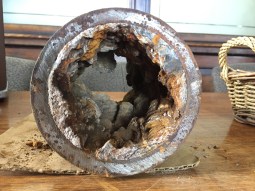
Zero Buildup in Water Heaters (Tank & Tankless) – Again, buildup on heating elements GREATLY reduces the water heater’s efficiency as well as building up in the whole system. Hardness is exacerbated when coupled with heat. Soft water allows water heaters to maintain 90%+ efficiency for over 15+ years. – Download study here.

No More “Foggy” Dishes – Hard water causes white etching on clear dishes that can cause the dishes to look foggy – not the case with soft water.
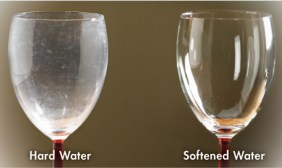
Less Need for Soaps & Detergents – One can usually use 1/2 as much or less detergent and soap than normally used and expect better results when using soft water.
Longer-Lasting Clothing – The damaging effects of hard water also wears down clothing faster and causes dulling of colors. Soft water allows for vibrant colors and long-lasting clothing.
Clean Shower Doors & Tile – Soft water helps keep shower doors and shower tile clean and rid of buildup.
How do Water Softeners Work?
Water softeners use a water treatment process known as ion exchange to remove the calcium and magnesium (hardness) molecules.
In the case of a water softener, the ion exchange process that takes place is exchanging the calcium and magnesium molecules (in the water) for the sodium (or potassium) molecules (on the softener resin beads).
Normal Operation – Removing Hardness from the Water

As you can see, the hardness molecules enter the water softener, and as the ion exchange process takes place, sodium molecules “swap” with the hardness molecules.
(No, that isn’t salt in the water, more on that below)
But what happens when all the media in the softener is exhausted? The softener needs to regenerate.
Regeneration – Reactivating the Softener Resin
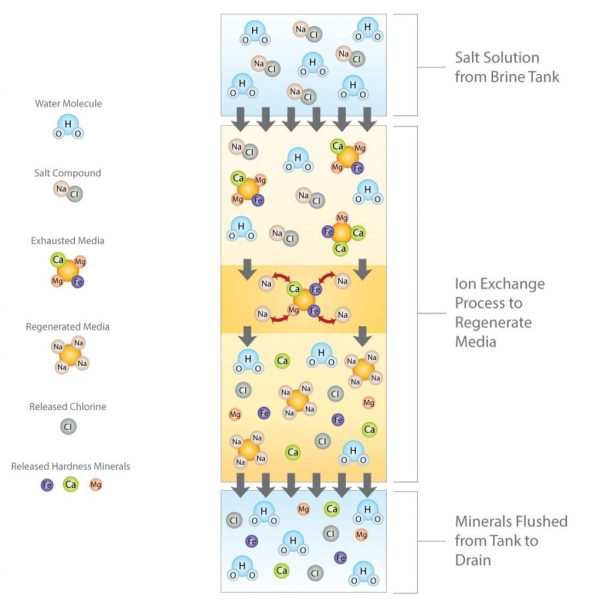
As you can see, as the salt rinses over the media, the hardness minerals, along with the chlorine molecules from the salt, are released and sent to drain. Leaving the softener resin fresh and ready to remove more hardness molecules.
Want to learn in more detail how water softeners work? Check out our guide to how water softeners work.
Why is Salt Used in Water Softeners?
Salt (sodium chloride) is key to a properly functioning water softener. Why? It is the source of the ion exchange process mentioned above!
When salt rinses down the softener resin media, another exchange happens. The sodium chloride molecules split and the sodium molecules cling to the resin beads. This pushes the hardness molecules off and it flushes away the hardness minerals along with the chlorine molecules that split from the sodium chloride molecules.
Do Water Softeners Put Salt in the Water?
NO. This is a big myth that gets tossed around about water softeners. A properly working softener will NEVER put salt into your water.
Salt (sodium chloride) is used to clean and reactivate the resin media, but in doing so, it breaks apart and only the sodium molecules remain on the resin media.
Sodium and salt are NOT the same things. Sodium is tasteless by itself. And the amount of sodium that is sent to your water is minuscule.
For reference:
- Water with 8 grains hardness, will add about 15 mg of sodium per 8 oz glass of water
- Water with 12 grains hardness, will add about 23 mg of sodium per 8 oz glass of water
- Water with 20 grains hardness, will add about 38 mg of sodium per 8 oz glass of water
- A Bagel has about 229 mg of sodium
- A Cup of beans has 856 mg of sodium
- A Slice of Wheat Bread has 148 mg of sodium
- An ounce of Cheddar Cheese has 176 mg of sodium

What About “Salt-Free Water Softeners”?

The “salt-free water softeners” that you’ve probably seen advertised do NOT soften water.
Soft water is defined as water absent of hardness minerals such as calcium and magnesium. These “salt-free water softeners” do not remove hardness minerals.
So what do they do?
“Salt-free water softeners” use a physical process known as Template Assisted Crystallization (TAC) which temporarily suspends the hardness minerals in a crystallized form to help prevent scaling.
The problem is that none of these systems have been certified and they have very specific use cases.
We have been in the water business since 1997 and there has only been 1 instance where the application was exactly right that we recommended a TAC system – and it wasn’t for a residence.
Types of Water Softeners
While the functioning process of a water softener is pretty much the same across the board, there are different types of water softeners of which you should be aware.

- Standard Water Softener
- Build: Pressure vessel with a valve head placed on top
- System: Electric Valve
- Brine Tank: Additional, placed to the side
- Size (Wide): 8″ inches to 13″
- Size (Height): 44″ inches to 54″ inches
- Application: Residential
- 24/7 Operation: No, will regenerate at a preferred time of day (ex. 2 am)

- Twin Standard Water Softener
- Build: Two Pressure vessels with a valve head placed on top on the vessels
- System: Electric Valve
- Brine Tank: Additional, placed to the side
- Size (Wide): 8″ inches to 13″ inches
- Size (Height): 44″ inches to 54″ inches
- Application: Residential
- 24/7 Operation: Yes

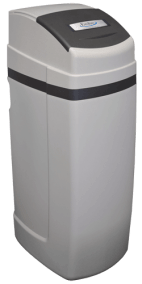
- Cabinet Water Softener
- Build: Boxed system that fits neatly as a single unit with a valve head on top
- System: Electric Valve
- Brine Tank: Built-In
- Size (Wide): 12″ inches to 16″ inches
- Size (Deep): 20″ inches to 30″ inches
- Size (Height): 34″ inches to 44″ inches
- Application: Residential
- 24/7 Operation: No
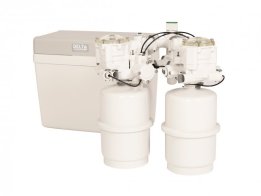
- High-Efficiency Water Softener (Small)
- Build: Duel-Unit System that is very efficient
- System: Non-Electric Valve
- Brine Tank: Built-In or Small additional to the side
- Application: Residential
- 24/7 Operation: Yes
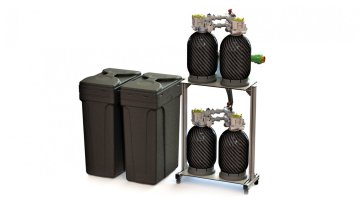
- High-Efficiency Water Softener (Large)
- Build: Boxed system that fits neatly as a single unit with a valve head on top
- System: Electric Valve
- Brine Tank: Additional, placed to the side
- Application: Industrial / Residential
- 24/7 Operation: Yes
Electric vs. Non-Electric
Which is better? Electric or non-electric?
Well, it depends on what’s important to you! There’s not a single simple answer to this question.
Electric softeners generally have more tracking settings features, while non-electric units tend to be highly efficient will generally be 24/7 operational.
Weigh out the pros and cons for you.
Options & Add-Ons
There are a few options and add-ons that one can purchase with a softener that can increase the value and capabilities of the unit.
- Wi-Fi Tech – This can be a very cool add-on, allowing you to change settings and see live data regarding your softener by simply using your phone or computer.
- Chlorine Generator – This will help keep your softener maintained and cleaned.
- Salt Monitor – This keeps on eye on your system to make sure you have enough salt in your unit.
Big Warranty? Be Careful.
Some water companies will promote a “lifetime warranty” or a 10-year, or 20-year warranty. Watch out.
Many of these companies charge extremely high prices. We’ll talk more on the cost below, but if they offer a lifetime or an extended warranty that is 10+ years, make sure they aren’t charging you 100%-200% more than the competition.
If you purchase a quality softener, it should last at least 15-20 years. (with service and maintenance)
There is an exception to this. Some water professionals will offer a “lifetime warranty” or a “1-year service warranty” every year if you are on their service plan – this is generally good, but you’ll want to make sure that this makes sense for you.
Maintenance & Service
What type of service and maintenance is required for a water softener?
The obvious first answer is salt replenishment. The frequency and amount will vary depending on water usage, water hardness, and system type. But, you can expect to fill your salt as much as once per month, or as little as once or twice per year.
Water softeners are mechanical devices, they have moving parts. This being said, some parts will eventually wear out and will need to be replaced on an as-needed basis, as well as on frequency-based.
And lastly, while not absolutely required, we recommend a full-system checkup on a 12 or 6-month frequency from a water filtration professional. These checkups can usually be performed for around $100-$150.
What Type of Salt Should be Used?
This is where a LOT of homeowners go wrong. MAKE SURE you know exactly what type of salt is recommended for your system. If you add salt with a “cleaning” or “iron-removal” property, it could very well destroy the resin in your system and you would need to have your softener re-bedded which is not cheap.
We always recommend solar-salt crystals. These can be purchased from Lowes, The Home Depot, or your local water professional probably has salt delivery as well.
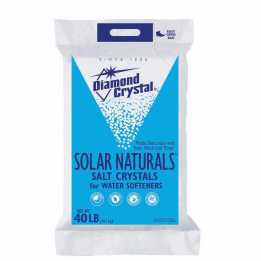
What About the Slick Feeling?
This was pulled from an article we wrote covering this topic:
“Soft water works harmoniously with soap and shampoo! When the soap is applied to your skin, rinsing the soap off with soft water truly CLEANS your skin! And that allows for your natural skin oils to finally come through. It’s how your skin is supposed to feel! Silky smooth skin instead of sticky soap curd-layered skin.
If the slick feeling is “hard” for you to get used to, give it some time. Most people, after using soft water for 1 month, can’t go back to the hard water feeling.
And if all else fails, it is possible to allow for a very small amount of hardness to come through the water to remove that feeling, but we do not recommend it.”
How Much “Hardness” is Removed in 1 Year
According to the United States Geological Survey, an average American uses 80-100 gallons of water per day. We’re going to be conservative and say only 30 gallons for adults per day and 20 gallons for children per day for our calculations.
A family of four, at about 100 gallons of water per day, would equal about 40,000 gallons of water per year.
Grains HardnessPounds Per Year (40,000 gallons)846 pounds of rock1268 pounds of rock20114 pounds of rock
Wow. That’s how many pounds of hardness minerals that will be removed from your water every year.

What a Water Softener CAN and CAN’T Do
Water softeners remove hardness from water. But they are also capable of removing some types of iron from water as well, and only in small quantities.
Some softeners are split systems that also have a carbon unit within the system that will remove chlorine and other organic contaminants. This is highly recommended if you are on city water since the chlorine in the water will deteriorate the softening resin.
Be Aware of the “Financial Savings” Pitch
While it is true that softeners, in the long run, will save you money, some water treatment companies go overboard with this sales pitch. It becomes highly pressured and does not look out for the interest of the homeowner. Be careful.
What is the Right Cost of a Softener?
Sometimes it can be easy to look at water softeners like a kitchen appliance, such as a refrigerator; there shouldn’t be any need to spend more than $2,000 to $4,000 on a refrigerator unless you’re going to purchase a high-end refrigerator or a built-in, for instance. But that’s really the wrong way to look at water softeners. Water softeners, and water filtration in general, should be looked at more like an HVAC unit, or a water heating unit.
Why? Because water softeners are built to scale. Some softeners are built for smaller homes with one or two bathrooms offering a 12 gallon per minute flow rate, while other softeners are designed to service a 15-bathroom home boasting a 50+ gallon per minute flow rate. So keep that in mind when purchasing a water softener.
So what is the right cost for a professional-grade water softener?
On the lower end, you can expect to pay anywhere from $2,500 to $4,500 for a professional-grade water softener unit, while on the higher end, you can expect anywhere from $8,000 to $15,000 for an industrial-grade system designed for large homes with high flow rate needs.
What About Big-Box Store Softeners?
If you are in the search of a water softener, you may have checked out Lowes or The Home Depot and seen that they have water softeners as well – so what’s the catch? These softeners are on sale for anywhere from $400 to $800 with some being in the $1000 to $1500 range.
Like most things in life, you get what you pay for. These softeners are designed to be sold as cheaply as possible to be placed in the mass-market arena. You’ll find trouble with quality, longevity, functionality, and getting proper service for these units.
Quality – The Box Store Softeners are simply not built with high-quality parts and materials. Remember, they are designed to be as cheap as possible, which does not lend itself to using a quality control head, or well-designed softener resin.
Longevity – There’s a stark difference in how long a softener will last when comparing a professional-grade softener with a box-store softener. You should expect a working lifespan of 15-20+ years from a professional-grade softener, while a box store softener would be a miracle to last more than 5 years.
Functionality – Another problem with box-store softeners is that they are not properly sized for the home and use-case. Not only that, but the installation process is also generally DIY or sub-contracted out to a plumbing technician who may not have experience with water softeners and how to set them up properly.
Service – Tieing back to the build, these systems are not designed with service in mind. It’s quite a bit more expensive to build a valve head that is modular and component-based.
To conclude, again we would only suggest that you’ll get what you pay for. Don’t expect to get a professional-grade product while paying bottom-barrel prices.
Can I DIY My Softener Selection and Installation?
The answer to this question comes down to you. “Can” you technically figure out how to install a water softener DIY? Probably. The real question that needs to be answered is “should” you DIY the water softener purchase/installation process? Our suggestion (while of course is biased) is no. Here’s why.
I should start this section by saying this is all based on the assumption that you have the ability to work with a trustworthy water softener & filtration company. And this can prove to be more difficult than initially assumed. Unfortunately, the water quality professional community is not known for being top-notch and looking out for the interests of the homeowner. We’ll be writing a guide very soon that breakdown everything you need to know before working with a water quality professional, a checklist to make sure you can check every box before signing on the dotted line.
Okay, now that we’ve made that clear, here are the reasons why we believe you shouldn’t DIY your water softener selection and installation.
Reason 1. Water Quality Knowledge and Experience – The water quality industry is just like any other technical industry, knowledge & experience is gold when it comes to preventing mistakes and costly errors. Testing the water, knowing how to understand the tests, knowing what equipment is right to solve the contaminant issues, knowing what size of equipment to use, knowing the best way to integrate the system into your home, and the list goes on.
Reason 2. Ongoing Service & Maintenance – Remember that water softeners are mechanical systems. They have moving parts within them, as well as the fact that they are treating WATER, Fast flowing, contaminant-filled, water. All this to say, while a water softener should not provide copious issues, problems will arise, and having a properly trained company that has the parts to fix the issue will be beneficial. Water softener issues must be diagnosed. A water softener that isn’t producing soft water could be the product of a number of issues that should be methodically checked.
Reason 3. Equipment Selection – While it is possible to purchase good equipment online, many professional-grade water softener manufacturers have a base of water quality companies which they sell their equipment through. Not to mention, many of these manufacturers have taken current water softener technology and added features that are not available online. For example, you can find a standard clack-valve system online, but companies like Evolve and Water Care have taken the Clack valve, upgraded the control board, and added proprietary features to the system which aggressively increases the value of the softener.
Something else to consider – what’s the value for you? If purchasing a water softener through a water quality professional and paying the premium for that isn’t worth it to you, then, of course, DIY will be the best option.
The problem with DIY is you need to factor in the TRUE cost. Can you replace a transmission on your car cheaper than you can hire a professional auto technician to perform the same task? Sort of. You know this. You can certainly purchase the transmission by itself for less, but what about the work? What about the tools you need? The jacks, lifts, wrenches, and other equipment? What about the knowledge of what you’re actually doing? If you’re anything like me, I wouldn’t know where to even start.
Okay, I’m finished with the rant, you get my point.
You need to decide what is the value for you and look at the true costs.
Working With a Water Quality Professional
The water quality industry has standards and certifications much like other industries. Making sure that you are working with a team that is qualified, and has experience and knowledge, is a crucial part to ensuring success in your journey of obtaining quality water.
- Certified Water Quality Professional – The Water Quality Association (WQA) is the industry standard for certifications. Make sure that the company you plan to work with has certified staff to back up their claims of knowing water quality.
- Certified Products – This is a major problem in the water quality industry. Many companies will make a filter and throw it up on the internet without getting it tested and certified. A good water quality professional will only offer equipment that has been certified.
- Water Knowledge – Water quality can be difficult to understand at times. A good water quality professional will walk through this with you, not cover it up with big words and complicated testing. Make sure you have at least some knowledge about what you’re investing in, a good water quality professional will be as much a teacher as a water quality specialist.
Making Sure a Water Softener Will Work in Your Home
There are a few things needed to integrate a water softener into a home.
- Water Main to Connect to – This is rather obvious, but the water softener will need to be connected to the water main right after it enters your home. This more easily said than done on some homes, but a water quality professional will be able to scope out your home and ensure that the tie-in is possible. You can also check this yourself! Something to consider, sometimes people like to have one or two of their outdoor water spigots not connected to the water softener so they can use a lot of water for irrigation or another use.
- Drain Line – Water softeners send some water to drain during the process of regeneration. So, access to a drain line will be needed for a water softener installation.
- Electrical Outlet (optional) – If you are planning to use an electric water softener, a standard outlet will be needed to power the unit.
That’s pretty much it!
How Much Space Is Needed for a Water Softener System?
Softeners don’t take up too much space! You can expect to use about a 2ft x 3ft footprint for a standard softener with a brine tank. We’ve installed softeners in closets, garages, crawl spaces, attics – they can fit just about anywhere the space is available.
Will a Water Softener Reduce My Water Pressure?
Water softeners should only reduce water pressure by a couple of pounds. So if your water pressure is 60 psi, a water softener should only reduce the pressure to around 58 psi. And oftentimes, there is no pressure reduction.
What’s Next?
A water softener is an investment, learn about your investment, and don’t make a decision on a whim, make sure you have a base of understanding.
We hope this guide has given you some ground to stand on when it comes to water softeners. Feel free to reach out if you have any questions or would like to learn more!
Ready to Take Control of Your Water Supply?
Don’t wait for water shortages or unreliable sources to disrupt your life. With our Rainwater Harvesting systems, you can enjoy a sustainable, reliable, and completely self-sufficient water solution tailored to your home’s needs.
